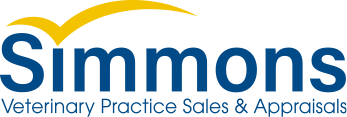Byron Farquer, DVM, CVA
Buying a practice is so exciting you can almost feel tangible energy in the air! There are also significant potential mistakes lurking in the shadows, and you can choose to blindly plod through the early days of ownership or tread carefully and wisely. The single most important piece of advice in veterinary practice ownership transition is: don’t change anything! Read on to learn why.
Taking Ownership
Take It Slow
The bottom line is that you will make more of a mess of your new veterinary practice by changing things too soon than by waiting for a few months. Wanting to relocate Sally’s or Sam’s desk in the office? Thinking of changing shift schedules, pay rates, and hours of operation? Don’t do it yet. What about raising fees, changing the wallpaper, or canceling employee insurance coverage? Wait a bit longer.
Listen to Wisdom
Too often, buyers casually or blatantly dismiss the advice of experienced brokers regarding transition plans and protocols. It’s as though the last 30 or more years of observing veterinarians doing it very right or horribly wrong counts for nothing. But the truth is that how you prepare for your first 6 weeks of ownership can mean the difference between success or a very painful ownership transition and, worse, can lead to problems that may extend for years.
Build Trust
Here is the golden rule: Don’t change anything at first! It’s tough to walk into a veterinary practice as a new owner and leave things alone. You want to assert your creativity and authority. After all, “You are the boss.” There is one real deficiency you may be overlooking. You have not built sufficient trust or sufficiently bonded with the staff. Until you have gained their trust, anything, and I mean anything, you try to implement will be met with resistance. Except for safety or malpractice issues, leave things alone for a while. Get to know the practice and its staff. Listen twice as often as you speak, build trust, build a team, and then and only then should you implement any changes.
Seller Transition
Pay the Seller
Having the seller provide a transition is essential. At the very least, they should agree to provide some management advice and assistance for at least 45 days after the sale. In some cases, especially practices that involve single species or a “personality approach,” the buyer may want to procure at least 8 weeks or more of transition from the seller, during which the seller actively sees cases. Yes, this is a paid position. If you ask a seller to work, the seller should be compensated (and it doesn’t need to be for a long period). Still, a smooth transition is more cost-effective than costly advertising needed to recapture clients who left out of initial confusion, so put a little post-sale seller compensation in your working capital budget.
Maintain Authority
Be clear with the seller regarding authority. The staff may initially turn to the seller for counsel out of habit or respect, but you can’t have the seller calling the shots. You should communicate before the sale about how post-sale employees and business-related decisions will be handled. It can be very disruptive if a seller fails to give up the ownership mentality. Usually, that can be prevented by careful planning before the sale date between the buyer and seller.
Be Gracious
As important as a transition is to a successful sale, a badly behaving former owner is worse. If necessary, graciously thank the seller for agreeing to a longer transition, stop the employment, and release the seller. Do this only if pre-sale planning and post-sale problems fail to create a positive buyer and seller work environment and carry out the decision kindly. Transitions are important, so be careful dismissing the seller simply because you are frustrated but admittedly haven’t really put the time in to try to work things out. On the other hand, if it’s broke, don’t waste any more time trying to fix it. The termination of employment should be handled professionally, without emotion. Even if the situation became untenable, consider providing a letter of recommendation for the seller to use elsewhere. Certainly, there had to be a few things that you liked about working with the seller?
Employee and Employee-Related Due Diligence List
The following checklist should help you get a good start on preparation before the closing date and getting to know the practice and its staff.
Personnel
Obtain copies (or on-site access) for review:
- Obtain a list of all employees, their current compensation, and compensation for the prior year, date of hire, date of birth, race, sex, and job titles.
- Obtain a list of all inactive employees, stating the reason for their inactive status and the prognosis for their return.
- Collect I-9 forms for all active employees and all employment agreements.
- Gather Performance evaluation criteria and bonus plans.
- Obtain any non-compete, intellectual property, and confidentiality agreements. Also, obtain copies of non-compete agreements that currently apply to terminated employees.
- Gather contract-labor compensation agreements.
- Review balance sheet for any loan amounts and terms owed to or by officers, directors, or employees.
- Determine currency of payroll taxes
- Obtain a copy of the employee manual.
- Obtain a record of employee training
- Conduct background investigations on principal employees (may require approval).
- Summarize the names, education, experience, and professional biographies of the retained associates.
- Collect copies of support staff employee resumes.
- Obtain a list of all involuntary terminations within the past year, stating the reason for termination and the age, sex, race, and disability status of each person terminated. What has been the employee turnover rate for the past two years?
- Obtain a copy of the organization chart and who reports to whom.
Benefits:
- Review accrued 401k or other plan benefits: what is the company contribution percentage? What is the level of employee participation?
- Gather copies of all pension plan documents, amendments, and letters of determination if you keep them.
- Determine the funding status of the company pension plan and the ten-year projected cash expense associated with it.
- Itemize all fringe benefits, along with current and projected employee eligibility for and participation in each one.
- Obtain a list of all former employees using COBRA coverage and the dates their access to COBRA coverage expires.
Policies and Procedures:
- Obtain the accounting or bookkeeping policies and procedures manual, if any.
- Review all key accounting policies to ensure that they comply with generally accepted accounting principles.
- Review OSHA and HAZMAT compliance and presence of MSDS sheets
- Obtain the human resources policies relating to sexual harassment, background investigations, and drug testing (an employee handbook, if one exists).
Simmons Is Your Partner for a Smooth Owner Transition
There is undoubtedly more to do, but this will get you started on the right pathway. If you pre-plan the transition carefully, communicate effectively with the seller, get to know and understand the practice and its people, and appreciate the uniqueness of some of the practice’s current policies — seeing what you can learn from them before implementing change — your success is almost guaranteed. Henry Ford said, “If there is any one secret of success, it lies in the ability to get the other person’s point of view and see things from that person’s angle as well as from your own.” This is sage advice for the soon-to-be practice owner.
When you need expert guidance from experts who have been serving veterinary practice buyers and sellers for over 4 decades, reach out to Simmons Veterinary Practice Sales and Appraisals. We have the resources and knowledge to help you transition confidently into your next stage of life. Contact us today.


